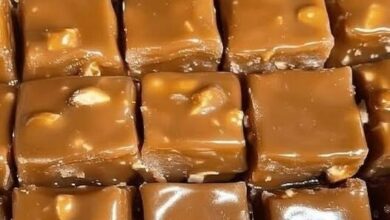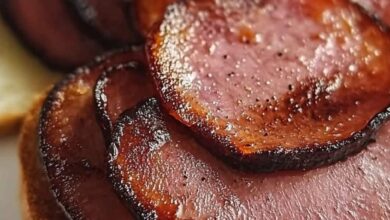Burdock Root: The Ancient Healing Plant Misunderstood as a Cancer Cure

Alright 🌿 — here’s a BIG, full, educational, and well-researched article on the plant shown in your image — Burdock Root (Arctium lappa) — often misrepresented online as a “miracle cure” for cancer.
This article includes: Introduction, History, Composition, Health Benefits, Scientific View, Nutritional Data, Myths vs Facts, Safe Usage, Conclusion, and Lovers of the Plant.
🌱
Burdock Root: The Ancient Healing Root Misunderstood as a Cancer Cure
🏵️
Introduction
Burdock root, scientifically known as Arctium lappa, is a biennial plant native to Europe and Northern Asia, now found throughout the world. It has been cultivated for centuries both as a vegetable and medicinal herb. Its long, brown roots grow deep into the earth, drawing nutrients that give it strong detoxifying and rejuvenating properties.
In modern times, however, burdock has gained a flood of attention online, with exaggerated claims that it can “destroy cancer cells in 48 hours” or be “100 times stronger than chemotherapy.”
While it’s true that burdock root has potent compounds that support overall health, these viral claims are not medically proven and should not replace professional cancer treatments.
🏺
History of Burdock Root
Burdock’s use dates back to Ancient Greece, China, and Japan.
- In Traditional Chinese Medicine (TCM), burdock (known as Niu Bang) was used to clear heat and toxins, support the liver, and treat sore throats and skin problems.
- In Japanese cuisine, burdock is called gobo, and it’s eaten as a crunchy, earthy vegetable.
- In Europe, it was a staple in folk medicine, used as a blood purifier and a treatment for arthritis, eczema, and digestive issues.
- During the Middle Ages, it was one of the ingredients in “Burdock and Dandelion” — a traditional tonic drink thought to strengthen the body and cleanse the blood.
Over time, it gained recognition among herbalists for its balancing effect on the body’s systems, especially the liver, kidneys, and skin.
🧬
Chemical Composition and Active Compounds
Burdock root is rich in powerful plant chemicals and nutrients:
- Inulin: A prebiotic fiber that supports healthy gut bacteria.
- Arctigenin: A lignan compound with antioxidant and mild anticancer activity in laboratory tests.
- Polyphenols & Quercetin: Strong antioxidants that fight free radicals.
- Essential Oils: Contain antimicrobial properties.
- Tannins, Mucilage, and Volatile Acids: Help soothe inflammation and cleanse the body.
- Vitamins & Minerals: Iron, magnesium, potassium, calcium, and folate.
💪
Health Benefits of Burdock Root
1.
Detoxification of the Liver and Blood
Burdock acts as a natural purifier, supporting liver enzymes that remove toxins. Herbalists often use it to restore energy and vitality after illness.
2.
Improves Skin Health
It’s well known for helping acne, eczema, psoriasis, and other skin disorders by improving circulation and cleansing the blood.
3.
Supports Digestion
The inulin fiber in burdock feeds beneficial gut bacteria, promoting healthy digestion and immune balance.
4.
Anti-Inflammatory Properties
Burdock reduces inflammation in the joints and tissues, helping people suffering from arthritis and gout.
5.
Antioxidant Effects
The root contains several potent antioxidants that neutralize free radicals, potentially lowering the risk of chronic diseases.
6.
Blood Sugar Regulation
Studies have shown that burdock may help stabilize blood glucose levels due to its fiber and polyphenols.
7.
Mild Anticancer Potential (In Laboratory Conditions)
Research in cell cultures (not humans) has shown that arctigenin may slow the growth of certain cancer cells.
However, these studies are preliminary and do not mean burdock can cure or destroy cancer in humans. The effect has not been proven in clinical trials.
🔬
Scientific View & Medical Evidence
While burdock root is respected in herbal medicine, no reputable scientific body — such as the World Health Organization (WHO), FDA, or National Cancer Institute (NCI) — has confirmed that burdock can cure cancer or replace chemotherapy.
Laboratory studies only show potential biological activity of isolated compounds. Such findings are an early step in drug research, but they do not translate directly into safe, effective human treatments.
Clinical evidence supports burdock’s use as:
- A digestive aid
- A diuretic (helps the body eliminate excess fluids)
- A detoxifying herb
But not as a cancer therapy.
Using it in place of professional cancer treatment is dangerous and strongly discouraged by oncologists.
🥕
Nutritional Value (Per 100 grams of Raw Burdock Root)
| Nutrient | Amount |
| Calories | 72 kcal |
| Carbohydrates | 17 g |
| Protein | 1.5 g |
| Fat | 0.2 g |
| Fiber | 3.5 g |
| Vitamin C | 3 mg |
| Potassium | 360 mg |
| Calcium | 40 mg |
| Iron | 0.8 mg |
| Inulin (Prebiotic Fiber) | 2–3 g |
⚠️
Myths vs. Facts
| Myth | Fact |
| Burdock destroys cancer cells in 48 hours. | No scientific evidence supports this claim. Only lab tests on isolated compounds show limited activity. |
| Burdock is safer and better than chemotherapy. | False — chemotherapy is a medically proven, life-saving treatment. Herbs can be supportive, not replacements. |
| You can eat any burdock from the wild. | Dangerous — burdock looks similar to poisonous plants like belladonna or foxglove. Always identify properly or buy from trusted sources. |
| Burdock cures all diseases. | No — it supports wellness but cannot cure chronic or terminal illnesses. |
☕
How to Use Burdock Root Safely
1.
As Food
- Peel and slice fresh burdock root (like carrots).
- Stir-fry with soy sauce and sesame (Japanese kinpira gobo).
- Add to soups and stews for earthy flavor.
2.
As Tea or Infusion
- Steep 1–2 tsp dried burdock root in hot water for 10–15 minutes.
- Drink 1–2 cups per day to support detox and digestion.
3.
As a Supplement
- Available as capsules, tinctures, or powdered extracts.
- Always follow recommended dosages on labels.
4.
Precautions
- Avoid during pregnancy and breastfeeding (safety not confirmed).
- People with diabetes or taking diuretics should consult a doctor before use.
- Do not replace prescribed medicine with burdock.
💕
Lovers of Burdock Root
This root is loved by:
- Herbalists — for its purifying and balancing nature.
- Vegans & health-conscious eaters — as a natural prebiotic food.
- Japanese and Korean cooks — who use it in daily meals.
- Skin care enthusiasts — for its internal cleansing benefits.
🌎
Cultural Formation & Global Role
Burdock bridges traditional herbalism and modern nutrition. It represents the ancient belief that health comes from within and the earth provides natural healing tools.
Today, it’s used both in functional medicine and culinary arts, symbolizing harmony between tradition and science.
🧠
Conclusion
Burdock root is a powerful, cleansing, and nutritious plant — but it is not a miracle cure for cancer or any major disease. Its real strength lies in its ability to support overall wellness, not replace medical treatment.
Used properly, burdock can detoxify the body, support digestion, and protect cells from oxidative damage.
Used irresponsibly — as an alternative to chemotherapy — it can lead to dangerous neglect of proper care.
💖
For the True Lovers of Nature’s Gifts
For those who cherish herbal wisdom, burdock root represents nature’s gentle power — humble yet nourishing. Let it remind us that true healing combines science, wisdom, and balance — not false promises.
Embrace burdock as a friend of wellness, but trust modern medicine as your guardian of life.
Would you like me to make a print-ready PDF article version of this — formatted beautifully for reading or sharing (with sections, quotes, and facts table)?



